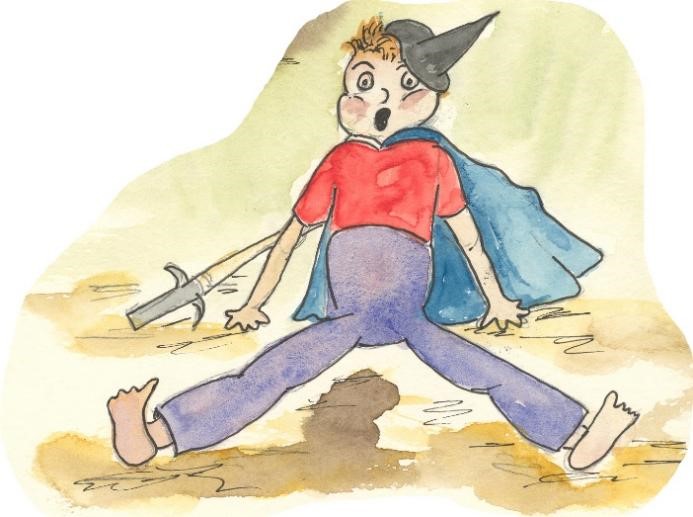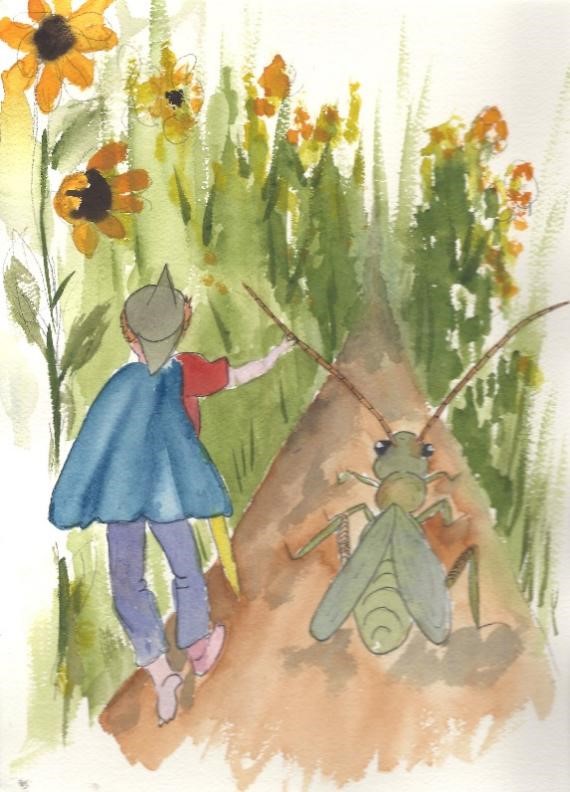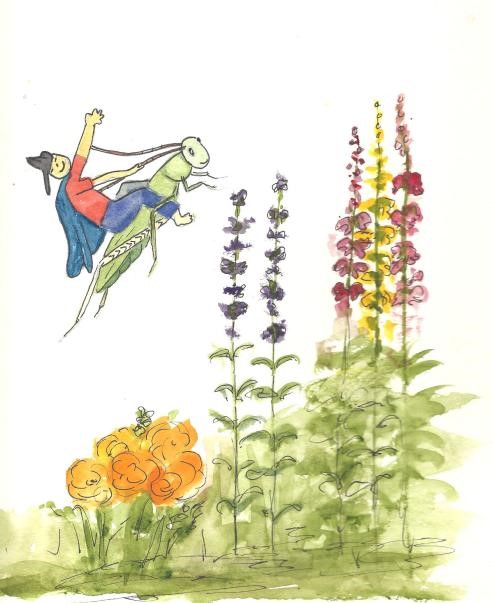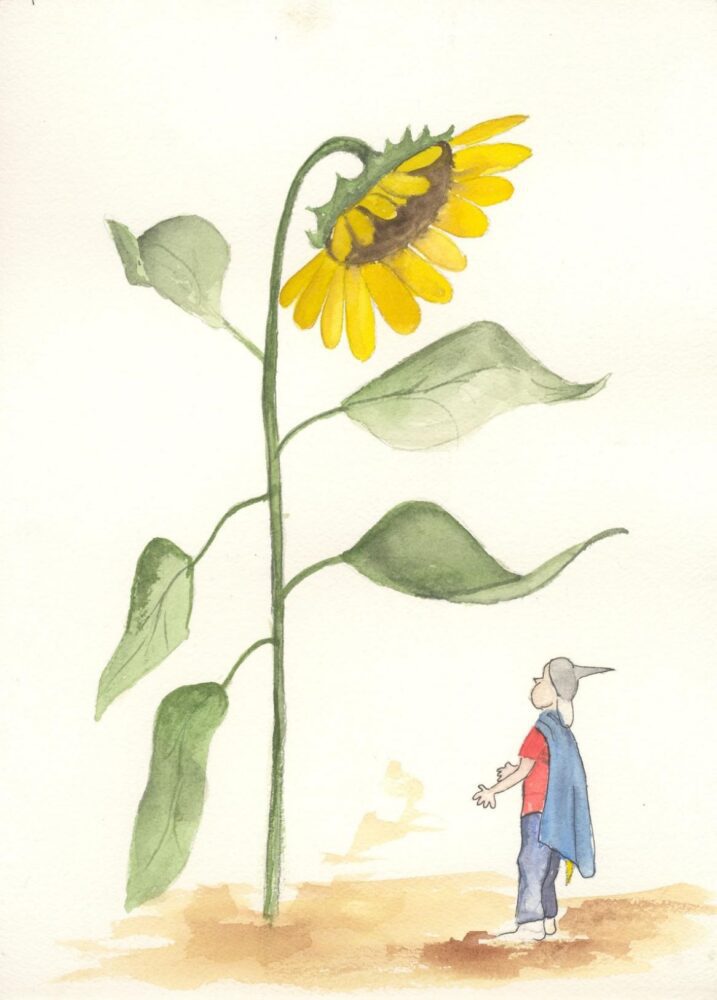By Terry Foxx
When I was drawing for the Plants of the Jemez Mountains, I often felt my drawings lacked something. I questioned why I was doing them. I was plagued by a lack of self-confidence. But as I look at them in retrospect, I am amazed at what I did. In that moment, memories of lost self-doubt come flooding back and the job of accomplishment is extinguished. Why? Should not one thousand drawings exude accomplishment? Absolutely! So a drawing may not be perfect, but they are very representative of the plant. Every one of us is sometimes plagued by self-doubt, even experienced writers, or those who draw!
In my early 30s, I moved to Los Alamos and decided I wanted to draw. My grandmother had kept all of my childhood drawings and I was amazed at their resemblance to what I saw. I signed up for an art class with a well-known artist in our area. I listened carefully to instructions, but I lacked understanding of lights and darks. The artist came over to my painting and took my brush and drew a large black line through the painting and said, “now correct this.” But how my heart cried! No explanation or caring! I was devastated and determined never to touch a brush again! My confidence had been shattered.
So often in grade school we have a teacher who makes our confidence grow and others that make our confidence crumble. I once read a story that illustrated this in Chicken Soup for the Soul-2nd Helping. The title was “Purple”. The quote at the beginning says,
“Every child is an artist. The problem is how to remain an artist once he grows up”.
– Pablo Picasso
The story continues,
In the first grade, Mr Lohr said my purple tepee wasn’t realistic enough, that purple was no color for a tent, that purple was a color for people who died, that my drawing wasn’t good enough to hang with the others. I walked back to my seat counting the swish, swish, swishes of my baggy corduroy trousers. With a black crayon, nightfall came to my purple tent in the middle of the afternoon. In second grade Mr. Barta said, “Draw anything.” He didn’t care that I left my paper blank and when he came around to my desk, my heart beat like a tom-tom while he put his big hand on my shoulder and in a soft voice he said, “The snowfall. How clean and white and beautiful.”
– Author Unknown
Fortunately for me, I kept thinking I would like to take a class. My grandmother had encouraged me and my heart craved creativity. Someone told me about a teacher of grade school children. I called her and she said all her adult classes were full, but I could join one with the children. I did, and that changed my life. She showed me how to correct my paintings, not with a ugly black line but gentle encouragement. She praised me and the other students (all children) about our drawings, which were always beautiful.
Sue Watts told me a wonderful story about learning to believe in yourself. She called the story “The Weedy Professor”. She said, “Our first assignment in ‘Art and the Child’ was daunting. Our professor led us out to a weedy patch and asked us to pick a weed. We were then dismissed with the admonition to draw an exact replica of the weed and to present our drawing and the weed side-by-side. Being dutiful students, we sweated our way through the assignment, drawing as meticulously as we could. The next day, we displayed our work and the professor looked it over, nodding as he went. Then, he faced us and said, ‘Those are excellent representations. Now, you can never say again, ‘I can’t draw.’ You can only say, ‘I decided not to spend time drawing.’ “
So often I hear someone say, “I am not an artist. I can’t draw.” No! You CAN draw, but you choose not to spend time drawing. It is a skill and learning takes time and effort. Journaling or drawing is a skill that can be learned through practice. It takes time to learn, as does any skill.
Who discouraged you? A teacher, a friend, or your own internal need for perfection? Every child is an artist, and every child is an observer and learner. The famous Pablo Picasso saw that. That is the wonderful thing about nature journal writing and drawing. A journal is your own private observations. No one can take that from you.
My oldest daughter wrote a story for her son. It was called “Under the Sunny Sunflower.” Her son dreamed that he became very small and had all sorts of adventures. She asked me to illustrate the story. I looked at her and said “I can’t do that! I am not good enough,” She responded, “Awe yes you can! And besides, he is only six.” With her encouragement I did it! And it was even in an art show! We all need someone to believe in us and push us beyond our fear of failure.
Fear is our worst enemy! It keeps us from stepping beyond our comfort zone. Here are a couple ideas to help you through your fear of failure.
1. Fear of the blank page. Most of us have a fear of that blank page. We ponder, can I fill it up? Will it be good enough, what if it looks ugly? So make your blank page not blank!
Color your page. Take out your brush and watercolor or watercolor pencils and color your page.
Put your metadata in the corner (date, weather, etc.)
Now you don’t have a blank page. Grab something you want to observe and write about it, draw it, or just ponder it.
2. Getting out of the perfection mood!
Everyone looks at their drawing and sees the lack of perfection. We all struggle with self-doubt. Don’t do that to yourself! This is not about perfection but observation! Your observation!
Begin by just writing down some things you see. Look closely! Make a diagram. Count the numbers of leaves, the position of leaves and flowers, or note where the plant or animal is. Pretty soon your page will be full. And you will be delighted. You will have a memory to recall every time you see your notes. Your confidence will be restored as you remember the event!
3. Stop comparing yourself to others.
Make sure you don’t fall into the trap of constantly comparing your work to someone else. In class, I hear people awe at an experienced journal. Remember, that is their memory, not yours.
Most of all, enjoy your perfect place at the most perfect time. Keep learning, growing, and making discoveries about your world. Observing the mysteries of nature is what it is all about!




Drawings from Under the Sunny Sunflower, written by Alison Carlisi and illustrated by Terry Foxx.

What an encouraging article Terry! It is inspiring and I hope to try .
Selvi